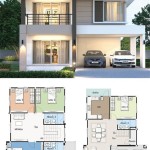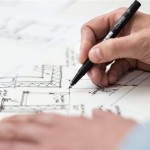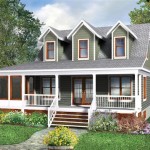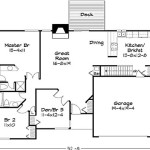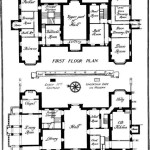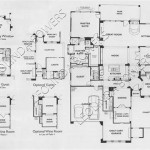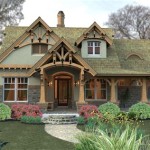Building Plans For Tiny House On Wheels: A Comprehensive Guide
The tiny house movement represents a shift towards simpler, more sustainable living. A significant subset of this movement involves tiny houses on wheels (THOWs), structures built on trailers, offering mobility and flexibility unmatched by traditional housing. Constructing a THOW requires careful planning and execution, with well-defined building plans serving as the foundation for a successful project. This article explores the critical aspects of building plans for tiny houses on wheels, providing essential information for prospective builders.
Understanding the Importance of Detailed Building Plans
Building plans for a THOW are not merely blueprints; they are comprehensive documents that detail every aspect of the construction process, from the trailer selection to the final finishing touches. The importance of these plans cannot be overstated. They serve as a roadmap, ensuring that the project stays on track, minimizes errors, and adheres to building codes and regulations. A well-defined plan mitigates risks associated with construction, such as material wastage, structural defects, and safety hazards.
Moreover, detailed plans are crucial for obtaining necessary permits and insurance. Local building departments typically require comprehensive plans to assess the structural integrity, safety features, and compliance with relevant codes before issuing a permit. Insurance companies rely on these plans to evaluate the risk associated with insuring the THOW. In the absence of adequate plans, securing permits and insurance can become significantly challenging, potentially halting the project altogether.
Furthermore, building plans facilitate accurate cost estimation. By specifying the materials, dimensions, and construction techniques, the plans enable builders to calculate the project's cost more precisely. This helps in budgeting effectively and avoiding unexpected expenses that can strain financial resources. Having a clear understanding of the projected costs also allows for informed decision-making regarding material selection and design choices.
Key Elements of Comprehensive Tiny House Building Plans
A comprehensive set of building plans for a THOW encompasses several critical elements, each playing a vital role in the overall success of the project. These elements include structural plans, electrical plans, plumbing plans, and mechanical plans. Each of these aspects need to be well-thought-out and integrated for a functional and sustainable tiny house.
Structural Plans: These plans detail the skeletal framework of the THOW, including the trailer specifications, foundation, wall framing, roof construction, and flooring. The structural plans must adhere to building codes and engineering principles to ensure the house's stability and resistance to various environmental factors, such as wind, snow, and seismic activity. Load calculations are essential to determine the appropriate size and spacing of structural members, such as studs, rafters, and floor joists. The plans should also specify the materials used for framing, sheathing, and siding, ensuring they meet the required strength and durability standards.
Electrical Plans: Electrical plans illustrate the layout of the electrical system, including wiring diagrams, outlet placement, lighting fixtures, and circuit breaker configurations. Proper electrical planning is crucial for safety and functionality. The plans must comply with the National Electrical Code (NEC) to prevent electrical hazards such as fires and shocks. The plans should also specify the size and type of wiring, the capacity of the electrical panel, and the grounding system. Furthermore, the plans should consider the energy needs of the THOW and incorporate energy-efficient lighting and appliances to minimize energy consumption.
Plumbing Plans: Plumbing plans depict the layout of the plumbing system, including water supply lines, drain lines, and fixtures such as sinks, toilets, and showers. The plumbing plans must adhere to plumbing codes to ensure proper water flow, drainage, and sanitation. The plans should specify the type and size of pipes, the location of shut-off valves, and the venting system. Additionally, the plans should consider water conservation measures, such as low-flow fixtures and rainwater harvesting systems, to minimize water usage.
Mechanical Plans: Mechanical plans illustrate the layout of the heating, ventilation, and air conditioning (HVAC) system. These plans are crucial for maintaining comfortable indoor air quality and temperature. The plans should specify the type and size of HVAC equipment, the location of air ducts and vents, and the insulation requirements. The plans should also consider energy efficiency and sustainability, incorporating features such as high-efficiency furnaces, heat pumps, and energy recovery ventilators.
Considerations for Mobility and Regulatory Compliance
One of the defining features of a THOW is its mobility. However, this mobility introduces unique challenges and considerations that must be addressed in the building plans. The weight and dimensions of the THOW must comply with transportation regulations to ensure legal and safe travel on public roads. Exceeding weight limits or dimensional restrictions can result in fines, delays, and even impoundment of the THOW.
The trailer itself must be designed and constructed to withstand the stresses of transportation. The trailer frame should be robust and properly reinforced to support the weight of the house and the dynamic loads experienced during travel. The axles, suspension, and tires must be rated for the maximum weight of the THOW. The hitch and safety chains must be securely attached to the towing vehicle.
Furthermore, the THOW must be designed to minimize wind resistance and improve stability during transport. The roof profile should be streamlined, and protrusions such as vents and antennas should be kept to a minimum. The center of gravity should be as low as possible to enhance stability and reduce the risk of tipping. The building plans should also specify how the house will be secured to the trailer to prevent movement during transport.
Navigating regulatory compliance is another critical aspect of building a THOW. Building codes and zoning regulations can vary significantly depending on the location. It is essential to research and understand the applicable regulations before starting the project. Some jurisdictions may have specific requirements for THOWs, while others may treat them as recreational vehicles (RVs) or accessory dwelling units (ADUs). Understanding these regulations is crucial for avoiding legal issues and ensuring the THOW can be legally occupied.
The plans need to address how the THOW will be connected to utilities such as electricity, water, and sewer. Some THOW owners choose to connect to existing utility grids, while others opt for off-grid solutions such as solar panels, rainwater harvesting systems, and composting toilets. The building plans should outline the necessary connections and installations for the chosen utility options.
In addition to building codes and zoning regulations, THOWs may be subject to transportation regulations and vehicle codes. These regulations govern the size, weight, lighting, and safety equipment required for towing a trailer on public roads. The building plans should ensure that the THOW complies with these regulations to avoid legal issues and ensure safe transport.
The Process of Creating and Utilizing Building Plans
The process of creating building plans for a THOW typically involves several stages, starting with conceptual design and progressing to detailed working drawings. The initial stage involves brainstorming ideas, sketching preliminary designs, and defining the overall layout and functionality of the THOW. This stage may involve creating mood boards, collecting inspiration images, and experimenting with different design options.
Once the conceptual design is finalized, the next stage involves developing detailed floor plans, elevations, and sections. These drawings illustrate the dimensions, layout, and appearance of the THOW from different perspectives. The floor plans show the arrangement of rooms, doors, windows, and fixtures. The elevations show the exterior views of the THOW, including the roofline, siding, and trim. The sections show cross-sectional views of the THOW, revealing the internal structure and construction details.
The next step involves creating structural, electrical, plumbing, and mechanical plans, as outlined earlier. These plans provide detailed information about the specific systems and components used in the construction of the THOW. It may be necessary to consult with qualified professionals, such as structural engineers, electricians, and plumbers, to ensure that the plans comply with building codes and regulations.
Once the building plans are complete, they should be reviewed and approved by the relevant building department. This may involve submitting the plans for review and attending meetings with building officials to address any questions or concerns. Once the plans are approved, a building permit can be obtained, allowing construction to begin.
During the construction process, the building plans serve as a guide for the builders. They should be readily available on-site and consulted frequently to ensure that the work is performed according to the approved design. Any deviations from the plans should be documented and approved by the building department before proceeding.
The building plans can also be used for material procurement. A detailed list of materials and quantities can be extracted from the plans to create a bill of materials, which can be used to obtain quotes from suppliers and order the necessary materials. This helps to streamline the procurement process and minimize material wastage.
Finally, the building plans can be used for documentation and maintenance purposes. They provide a record of the construction process and can be used to identify and resolve any issues that may arise in the future. The plans can also be used to plan future renovations or modifications to the THOW.
Selecting Pre-Designed Plans vs. Custom Plans
When embarking on a THOW project, builders face the decision of whether to use pre-designed plans or opt for custom plans. Pre-designed plans offer the advantage of cost-effectiveness and convenience. These plans are typically developed by experienced designers and are readily available for purchase online or through specialized retailers. They often come with detailed instructions and material lists, making the construction process more straightforward for less experienced builders.
However, pre-designed plans may not perfectly suit individual needs and preferences. They may require modifications to accommodate specific requirements or design choices. Furthermore, pre-designed plans may not be optimized for a particular building site or climate. It's important to thoroughly review pre-designed plans before purchasing them to ensure they meet the project requirements.
Custom plans, on the other hand, offer the advantage of complete design flexibility. Builders can work with an architect or designer to create plans that are tailored to their specific needs, preferences, and building site. Custom plans can incorporate unique design features, optimize energy efficiency, and address specific regulatory requirements. However, custom plans are typically more expensive and time-consuming to develop than pre-designed plans.
The choice between pre-designed plans and custom plans depends on the builder's budget, experience, and design preferences. Builders with limited budgets and less experience may find pre-designed plans to be a more practical option. Builders with more experience and a desire for complete design control may prefer custom plans.
Regardless of whether pre-designed plans or custom plans are chosen, it is essential to ensure that the plans are comprehensive, accurate, and compliant with building codes and regulations. Consulting with qualified professionals, such as architects, engineers, and building inspectors, can help to ensure that the plans are sound and that the construction process is successful.

Tiny House Floor Plans 32 Long Home On Wheels Design Trailer

Escape Traveler A Tiny House On Wheels That Comfortably Sleeps 6 Floor Plans Trailer

224 Sq Ft Tiny House On Wheels By Living Homes Small Diy

How To Pick The Best Tiny House On Wheels Floor Plan Wayward Home

Tiny House Plans The Project

Free Tumbleweed Diy Tiny House Plans Houses

27 Adorable Free Tiny House Floor Plans Craft Mart

Tiny House Floor Plans 32 Home On Wheels Design

Tiny House Plans On Wheels Main Floor Bedroom Office Lofts

Floor Plans For Your Tiny House On Wheels Photos

